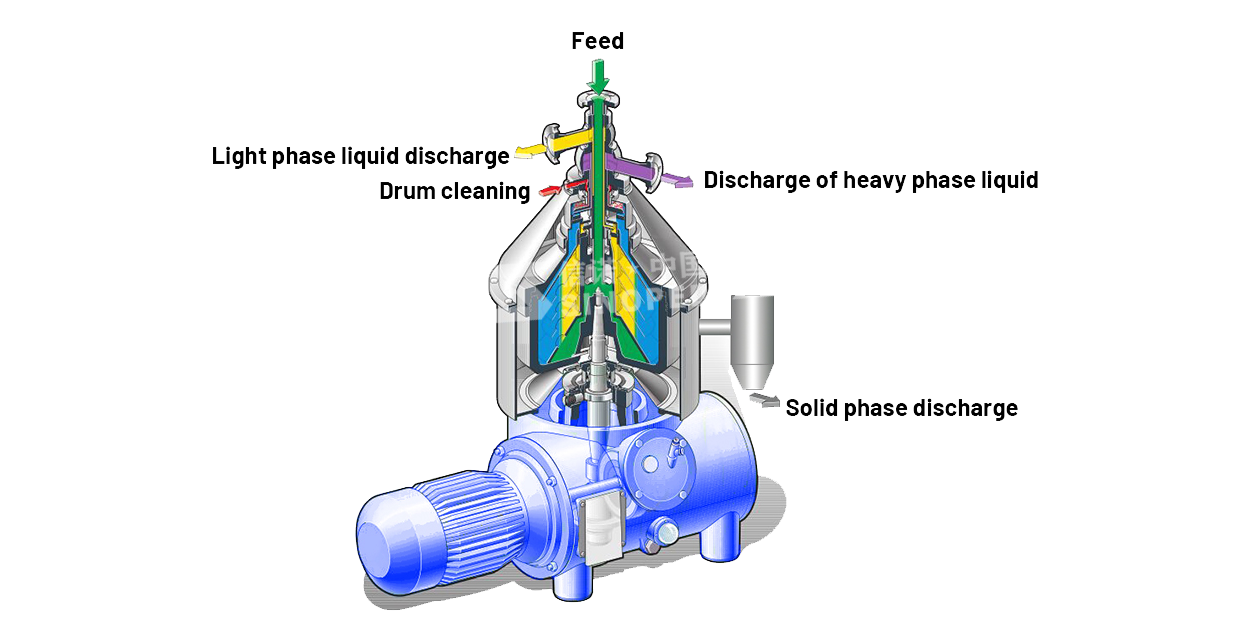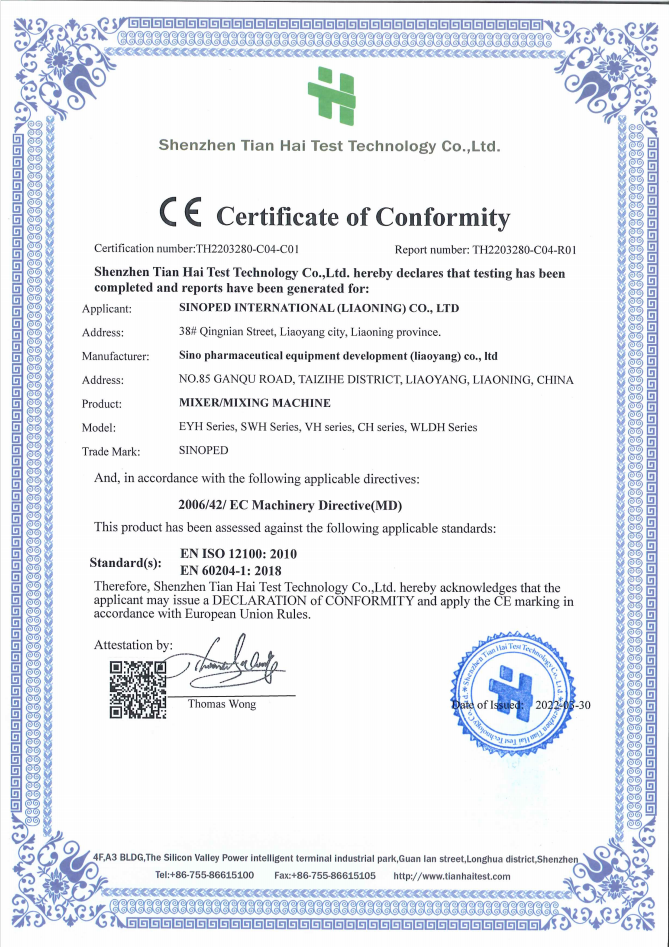Dish separator is a kind of mechanical equipment for continuous separation of two kinds of liquid or solid-liquid suspension containing density difference by using the principle of centrifugal sedimentation. It has the advantages of high speed, stable operation, closed import and export system, low noise, good separation effect and so on. It is involved in many industries such as chemical, biopharmaceutical industry and food.
Type: Centrifuge
Weight: 1100
Dimension(L*W*H): Model Choosing
Material: SS304,SS316
Discharge: Automatic discharge
Speed control: Frequency inverter optional
Applicable Industries: Manufacturing Plant, Food & Beverage Factory, etc

| Model | DHY/DHC 270 | DHY/DHC 400 | DHY/DHC 500 | DHY/DHC 530 |
| Capacity (L/H) | 500-1500 | 1500-3000 | 3000-6000 | 5000-10000 |
| Motor Speed (RPM) | 1460 | 1460 | 1460 | 1460 |
| Motor Power (KW) | 4 | 7.5 | 15 | 22 |
| Turn on time (min) |
5-8 | 5-8 | 5-8 | 5-8 |
| 体重(公斤) | 550 |
810 | 1680 | 2260 |
Main features:
1. Strong separation ability, separation factor between 5000-10500.
2. Large production capacity, up to 30m/h.
3. Strong mobility, it can be operated automatically or manually according to needs, and can also achieve remote automatic operation.

1. Molecular and Cell Biology:
DNA, RNA and protein purification: Used to isolate and purify nucleic acids and proteins, such as PCR products, plasmid DNA, protein components, etc.
Cell precipitation: Used for the precipitation and separation of cells and cell fragments.
2. Vaccine and drug manufacturing:
Clarification and concentration of cell cultures: used to remove cell debris, impurities, and residual media from cell cultures to improve purity and activity.
Protein precipitation and separation: used for the purification and separation of proteins in the manufacture of vaccines and drugs, such as recombinant proteins, antibodies, etc.
3. Medical diagnosis:
Serum separation and plasma preparation: Used to separate red blood cells and clots in whole blood samples from plasma or serum for disease diagnosis and biochemical testing.
4. Environmental Science and water treatment:
Particle sedimentation: used for precipitation and separation of particles in water samples, such as sewage treatment, water quality analysis, etc.
Microbial sedimentation: Used for the separation and sedimentation of microorganisms, such as water quality testing and microbial ecology research.
5. Food and Beverage industry:
Juice clarification and solid particle separation: used to improve the clarity of juice, wine and other beverages and the separation of solid particles.





Get In Touch With Us
The first thing we do is meeting with our clients and talk through their goals on a future project.
During this meeting, feel free to communicate your ideas and ask lots of questions.